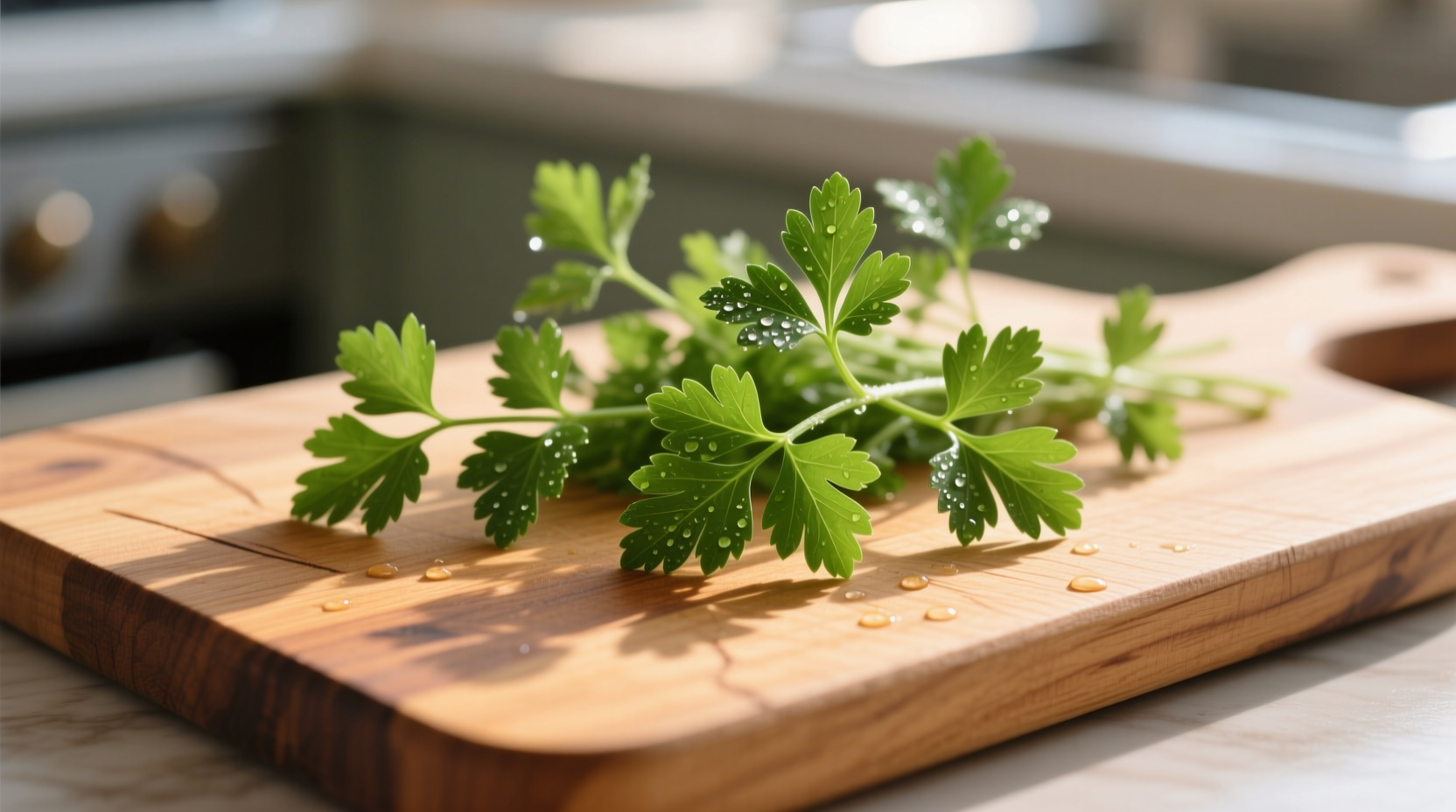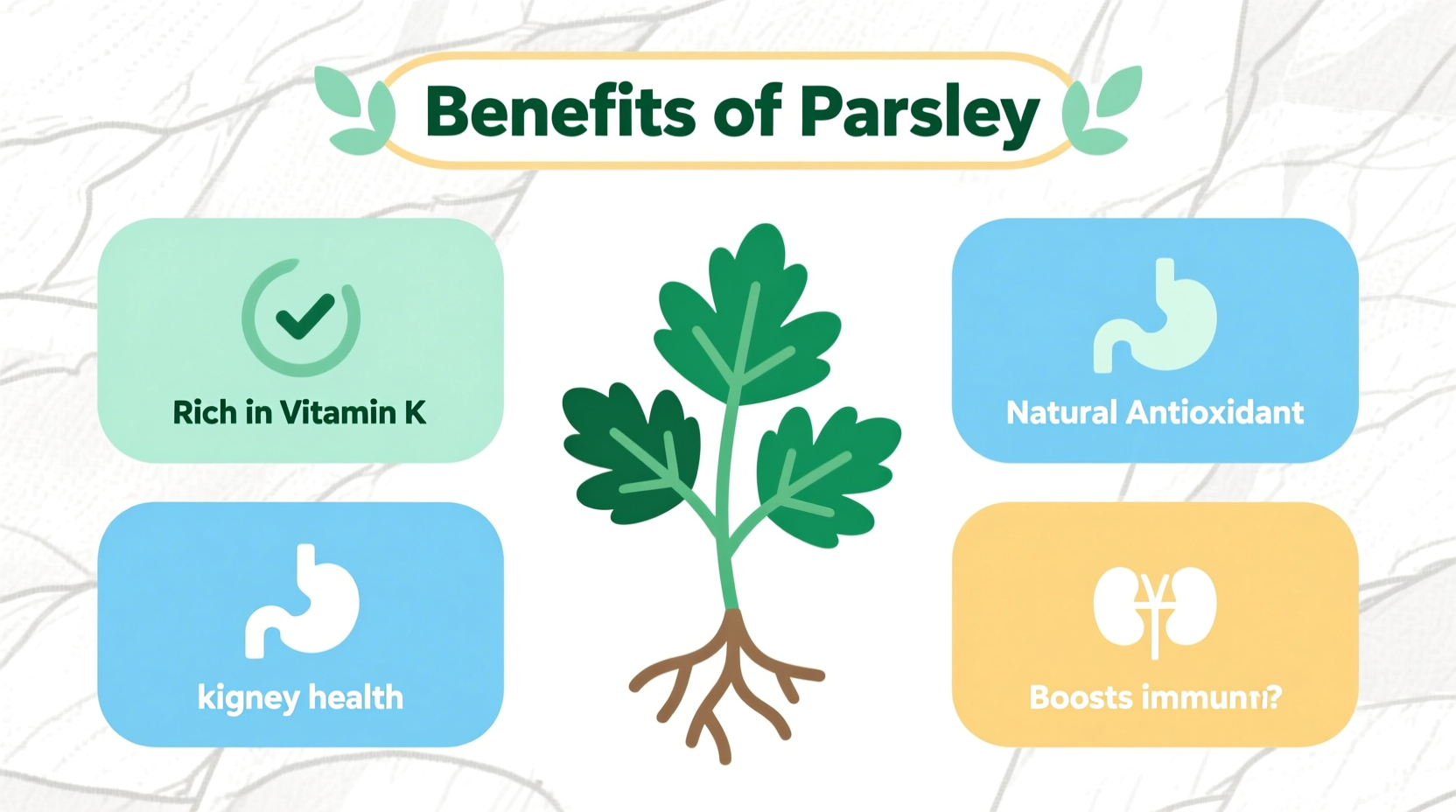Parsley delivers exceptional nutritional value with just one tablespoon (3g) providing 81% of your daily vitamin K needs, 11% of vitamin C, and significant antioxidants. This humble herb supports heart health, bone density, and inflammation reduction while being low in calories and versatile in culinary applications.
When you reach for that sprig of parsley as a plate garnish, you're overlooking one of nature's most potent nutritional powerhouses. This unassuming herb packs a remarkable concentration of essential vitamins and bioactive compounds that deliver measurable health benefits when incorporated regularly into your diet. Unlike many superfoods that require special preparation or come with high price tags, parsley offers exceptional nutritional density at an accessible cost with minimal preparation needed.
Nutritional Powerhouse in Every Sprig
While often dismissed as mere decoration, parsley actually ranks among the most nutrient-dense herbs you can consume. A single cup (60g) of fresh parsley contains:
| Nutrient | Amount per Cup | Daily Value % |
|---|---|---|
| Vitamin K | 1,230 mcg | 1,025% |
| Vitamin C | 133 mg | 148% |
| Vitamin A | 8,424 IU | 168% |
| Folate | 152 mcg | 38% |
| Iron | 4.0 mg | 22% |
Compared to other common herbs, parsley outperforms cilantro, basil, and mint in vitamin K and vitamin C content. This nutritional profile makes it particularly valuable for those seeking natural ways to support multiple body systems without supplements.

Science-Backed Health Benefits You Can Trust
Modern research continues to validate what traditional medicine systems have recognized for centuries about parsley's therapeutic potential. Let's examine the evidence behind its most significant benefits.
Cardiovascular Protection Through Multiple Pathways
Parsley's heart-healthy properties operate through several mechanisms. The herb contains apigenin, a flavonoid shown in National Institutes of Health research to reduce inflammation markers associated with heart disease. Additionally, parsley's high vitamin K content plays a crucial role in preventing calcium buildup in arteries—a process known as vascular calcification.
Furocoumarins in parsley may also contribute to blood pressure regulation. A 2020 study published in the Journal of Medicinal Food demonstrated that regular consumption of parsley extract significantly reduced systolic blood pressure in participants with mild hypertension. While fresh herb consumption won't deliver the same concentrated effects as extracts used in studies, incorporating 1-2 tablespoons daily contributes to cardiovascular support.
Bone Density Support Beyond Calcium
While calcium gets most of the attention for bone health, vitamin K is equally crucial—and parsley delivers exceptional amounts. Vitamin K activates osteocalcin, the protein that binds calcium to the bone matrix. Research from the National Library of Medicine indicates that adequate vitamin K intake reduces fracture risk by 26% and improves bone mineral density.
Unlike supplements, parsley provides vitamin K in its natural form alongside complementary nutrients like calcium and magnesium that work synergistically for optimal bone health. This natural combination may explain why population studies show better bone outcomes from whole food sources compared to isolated supplements.
Natural Anti-Inflammatory Effects
Chronic inflammation underlies many modern diseases, and parsley offers natural anti-inflammatory compounds. Myristicin, one of parsley's key essential oils, has demonstrated significant anti-inflammatory activity in laboratory studies. When combined with parsley's vitamin C and flavonoids, these compounds create a powerful anti-inflammatory profile.
A 2022 review in Nutrients analyzed multiple studies on culinary herbs and found that regular consumption of parsley correlated with reduced levels of C-reactive protein (CRP), a key inflammation marker. The researchers noted that consuming just 10g of fresh parsley daily provided measurable anti-inflammatory benefits over time.
Practical Guidance for Maximum Benefit
Understanding parsley's benefits is only valuable if you know how to incorporate them effectively into your daily routine. Here's what the evidence suggests for optimal consumption.
Optimal Consumption Amounts
Research indicates that consistent, moderate consumption delivers the best results. Aim for:
- 1-2 tablespoons chopped fresh parsley daily for general health maintenance
- ¼ cup (15g) daily for targeted cardiovascular or bone health support
- Up to ½ cup (30g) daily when using parsley for specific therapeutic purposes
Unlike many herbs that lose potency when dried, parsley retains significant nutritional value in both fresh and dried forms, though fresh parsley contains approximately 30% more vitamin C.
Preparation Methods That Preserve Nutrients
To maximize parsley's health benefits, preparation matters:
- Chop and wait: Cutting parsley releases beneficial compounds; let it sit 5 minutes before consuming
- Avoid prolonged cooking: Add parsley during the last 2-3 minutes of cooking to preserve vitamin C
- Pair with healthy fats: Vitamin K is fat-soluble; combine with olive oil or avocado for better absorption
- Store properly: Keep fresh parsley in a glass of water in the refrigerator, covered with a plastic bag
Realistic Integration Into Daily Meals
You don't need dramatic dietary changes to benefit from parsley. Simple additions include:
- Blend into morning smoothies (hides well with strong flavors like citrus or pineapple)
- Stir into soups and stews during the final minutes of cooking
- Create parsley pesto as a sandwich spread or pasta sauce
- Add to scrambled eggs or omelets just before serving
- Make tabbouleh salad with bulgur, tomatoes, and lemon juice
Important Considerations and Limitations
While parsley offers numerous benefits, understanding its limitations ensures safe and effective use.
When Parsley Might Not Be Appropriate
Certain individuals should moderate their parsley intake:
- Those taking blood thinners like warfarin should maintain consistent vitamin K intake (consult your physician)
- People with kidney disease should monitor potassium intake from large quantities
- Pregnant women should avoid medicinal amounts (though culinary use is safe)
- Individuals with known allergies to Apiaceae family plants (carrots, celery)
Realistic Expectations for Health Impact
It's crucial to understand that parsley functions as a supportive dietary component, not a miracle cure. The herb's benefits accumulate through consistent, long-term consumption as part of an overall healthy diet. Don't expect dramatic overnight changes from adding parsley to an otherwise poor diet.
Research shows that significant health improvements typically require at least 8-12 weeks of regular consumption alongside other healthy lifestyle factors. Think of parsley as one valuable piece in your comprehensive wellness strategy rather than a standalone solution.
Scientific Evolution of Parsley Research
The understanding of parsley's health properties has evolved significantly over time:
- Pre-1950s: Traditional medicine systems worldwide recognized parsley's diuretic and digestive properties
- 1950-1980: Vitamin K discovery explained parsley's historical use for blood clotting
- 1980-2000: Antioxidant research identified flavonoids and carotenoids in parsley
- 2000-2015: Molecular studies revealed anti-inflammatory mechanisms of parsley compounds
- 2015-Present: Human clinical trials examining specific health outcomes from regular consumption
Current research focuses on isolating specific compounds for therapeutic applications while validating traditional uses through rigorous scientific methodology. The shift from anecdotal evidence to evidence-based recommendations represents significant progress in understanding this humble herb's true potential.











 浙公网安备
33010002000092号
浙公网安备
33010002000092号 浙B2-20120091-4
浙B2-20120091-4